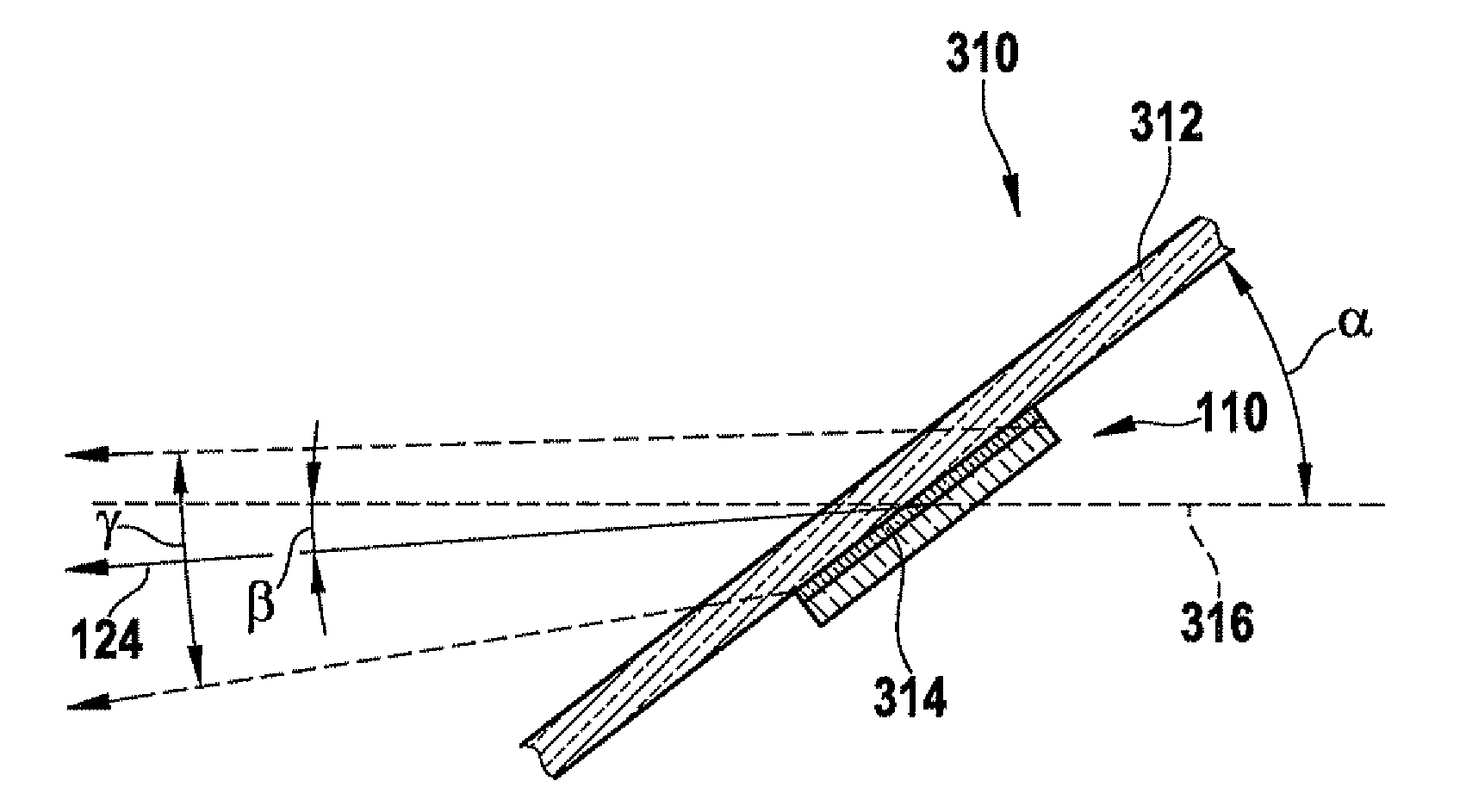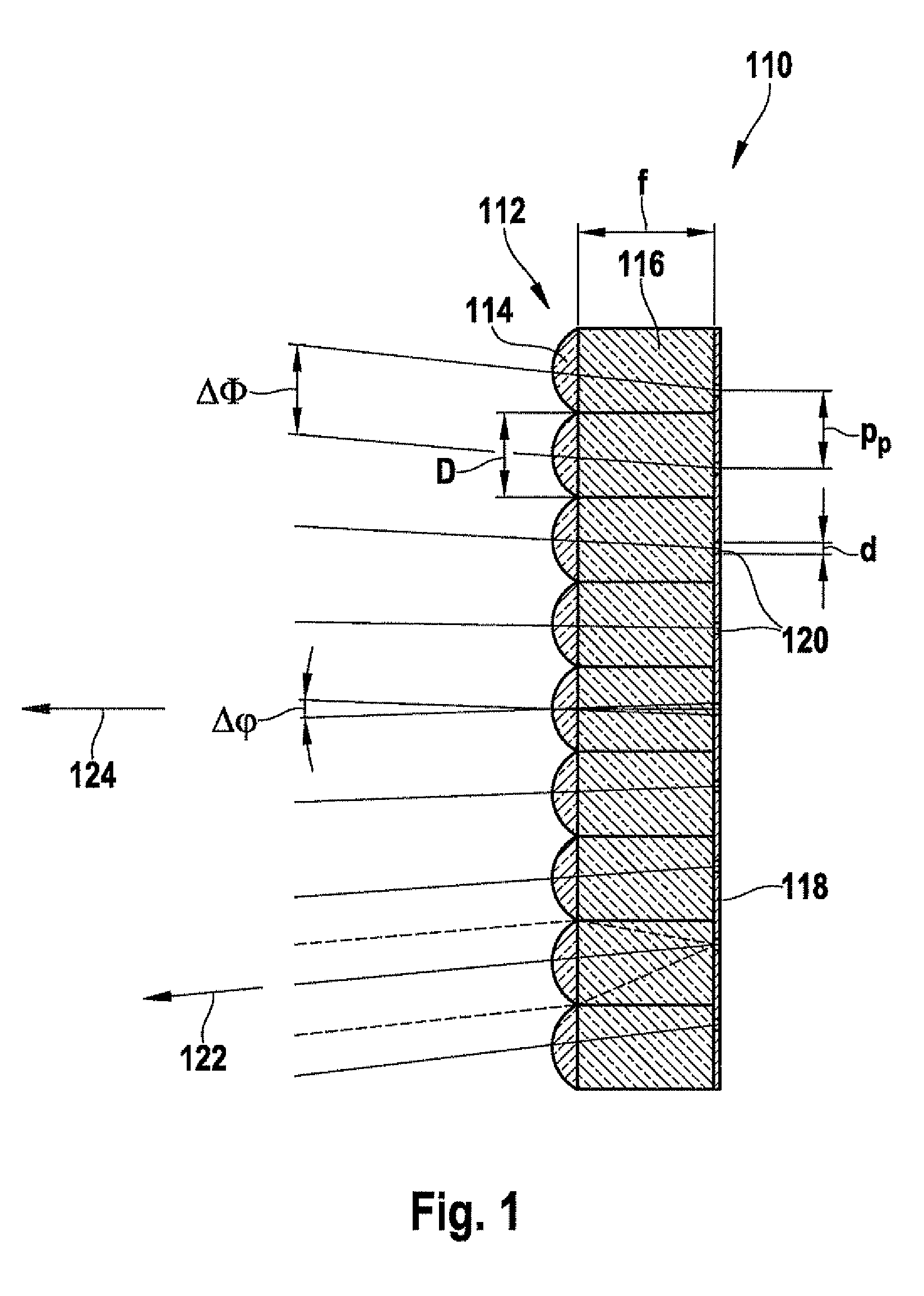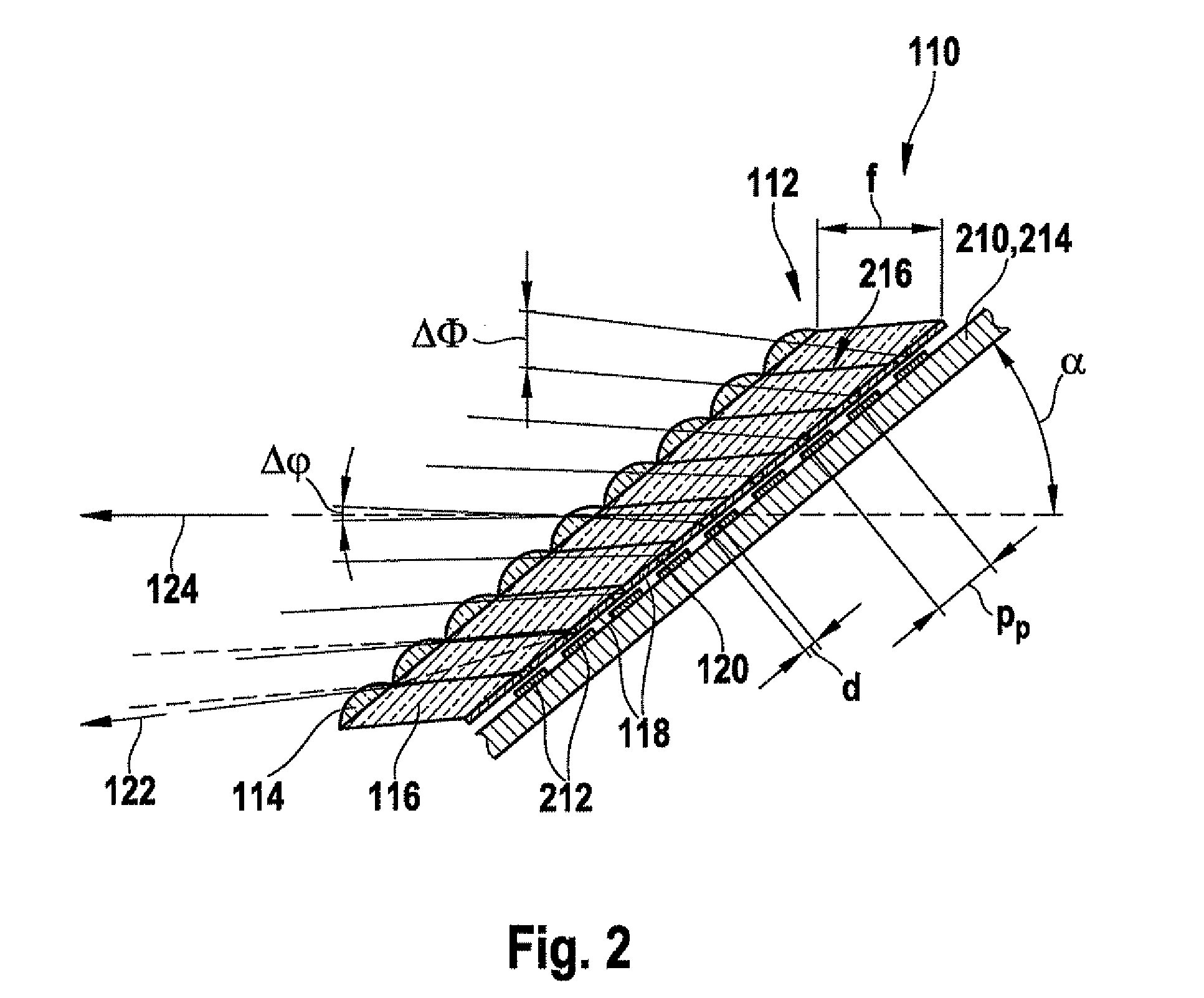Image capture system for applications in vehicles
a technology for vehicle applications and capture systems, applied in the field of vehicle image capture systems, can solve the problems of large volume of camera systems, inconvenient expansion of baffles, and comparatively large distance between the lower edge of the lens and the windshield, so as to reduce the space requirement, improve the design aspects of the exterior view of the vehicle, and improve the effect of imaging properties
- Summary
- Abstract
- Description
- Claims
- Application Information
AI Technical Summary
Benefits of technology
Problems solved by technology
Method used
Image
Examples
Embodiment Construction
[0026]FIG. 1 shows a part of a conventional image capture system 110, the structure and manufacture of which is described, for example, in the above-cited publication by J. Duparre et al. in Applied Optics. Image capture system 110 has a micro-lens system 112 having a plurality of micro-lenses 114 arranged to form a matrix. Each micro-lens 114 has an associated pillar 116 of an optical material, the pillar in this case being a vertical pillar.
[0027]Furthermore, an aperture mask 118 is provided, which in this exemplary embodiment is situated directly adjacent to pillars 116. Aperture mask 118 has a plurality of openings 120, one opening 120 being respectively associated with one micro-lens 114. Thus one micro-lens 114 and one opening 120 respectively define a pick-up direction 122 of a pixel. In this example, pick-up direction 122 of the central pixel or central opening 120 defines main viewing direction 124 of image capture system 110. In this image capture system 110, main viewing ...
PUM
 Login to View More
Login to View More Abstract
Description
Claims
Application Information
 Login to View More
Login to View More - R&D
- Intellectual Property
- Life Sciences
- Materials
- Tech Scout
- Unparalleled Data Quality
- Higher Quality Content
- 60% Fewer Hallucinations
Browse by: Latest US Patents, China's latest patents, Technical Efficacy Thesaurus, Application Domain, Technology Topic, Popular Technical Reports.
© 2025 PatSnap. All rights reserved.Legal|Privacy policy|Modern Slavery Act Transparency Statement|Sitemap|About US| Contact US: help@patsnap.com



